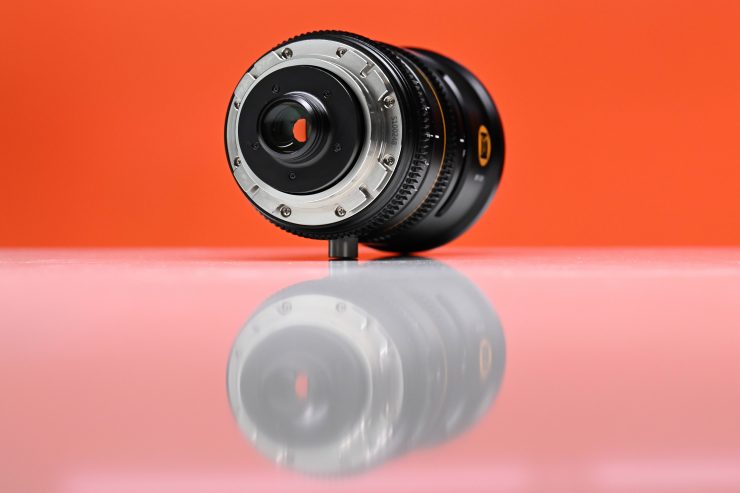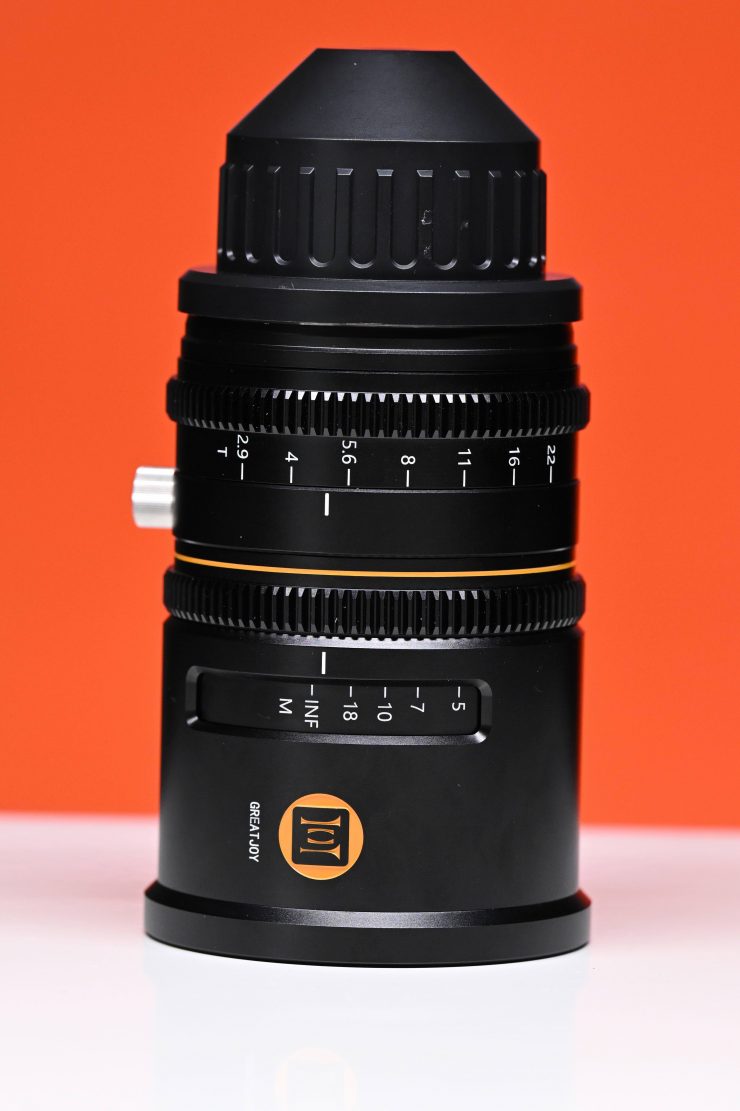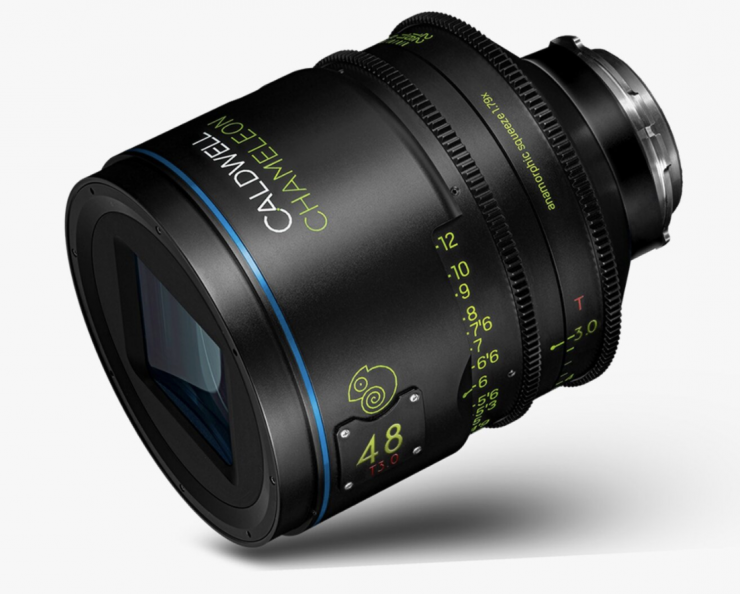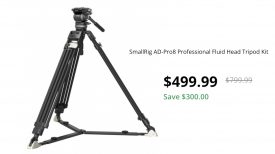
The Great Joy 50mm T2.9 1.8x Anamorphic Lens was recently announced and it now joins the growing list of new anamorphic options hitting the market. Recently we saw the Samyang 50mm T2.3 XEEN Anamorphic that will retail for $19,999 USD, well the Great Joy is at the opposite end of that spectrum and the lens will cost between $1,119 to $1,360 USD depending on the mount.
The sample footage that was released looked pretty decent, especially for a lens at this price point. Under $1,400 USD is not a lot of money to pay for any lens so the reward probably outweighs the risk. I wanted to look at this lens a little closer so I got hold of one for review.
If the name Great Joy sounds slightly familiar it should. Last September they announced a 60mm T2.9 Full Frame 1.33x Anamorphic Lens & 1.35x Anamorphic adapter.
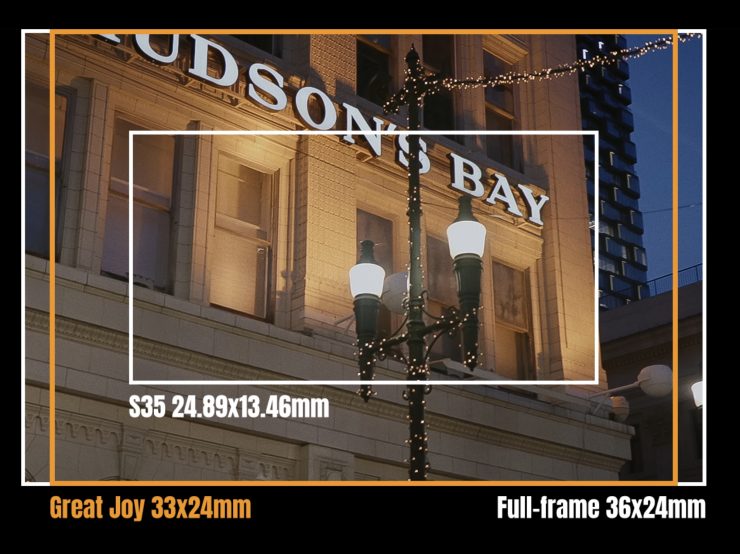
Their latest offering, the 50mm T2.9 1.8x Anamorphic covers a 33×24 mm image circle. If you are shooting open gate 4:3 you can get a 2.4:1 image without any vignetting on a camera with a full-frame sensor.
I did, however, find that you did get some slight vignetting when shooting open gate on certain cameras, but if you are cropping to get a 2.39:1 aspect ratio then you won’t see any of that slight vignetting.
Concept
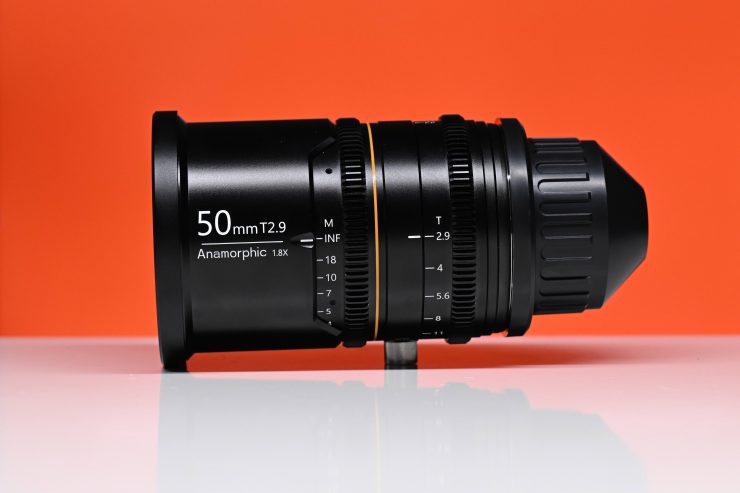
The 50mm T2.9 is Great Joy’s first foray into making 1.8x anamorphic primes and it is designed to cover full-frame cinema cameras. The whole concept behind this lens is to bring an affordable full-frame anamorphic lens to the masses. Most anamorphic lenses, especially those that cover full-frame are expensive. Great Joy bucks this trend and the price almost makes it sound too good to be true.
Great Joy isn’t just going to release a 50mm, they also have a 35mm and 85mm in the works so you don’t have to worry about buying a lens and then worrying if any more focal lengths will appear. I would imagine that if these lenses prove to be popular then there may well be other focal lengths available in the future to further expand the set.
I think it would be fair to say that Great Joy is probably trying to attract owner/operators of mid-tier and lower-cost digital cinema cameras and mirrorless hybrids that are capable of shooting in open-gate anamorphic modes. They could also very well find themselves on more expensive cameras as well.
At $1,279 USD you can absolutely classify this lens as affordable. In the anamorphic space, they are certainly a lot more affordable than other options that are available. To put the price in perspective, the Vazen 1.8x anamorphic costs $8,000 USD.
Size & Weight
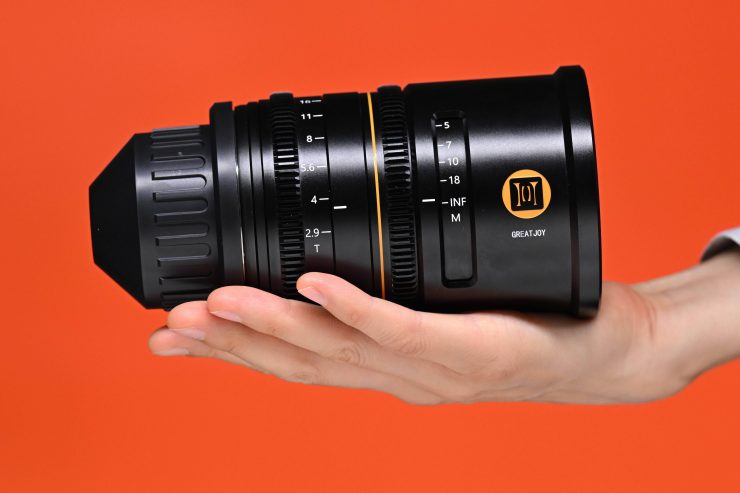
The 50mm 1.8X anamorphic lens features a reasonably compact and lightweight design. It tips the scales at 1.04-1.09 kg / 2.29-2.40 lb depending on the mount choice. This makes it lighter than the Vazen 50mm T2.1 which weighs 3.42 lb / 1.55 kg. The idea behind keeping the size and weight to a minimum was so that the lenses could be balanced on gimbals and other stabilized platforms.
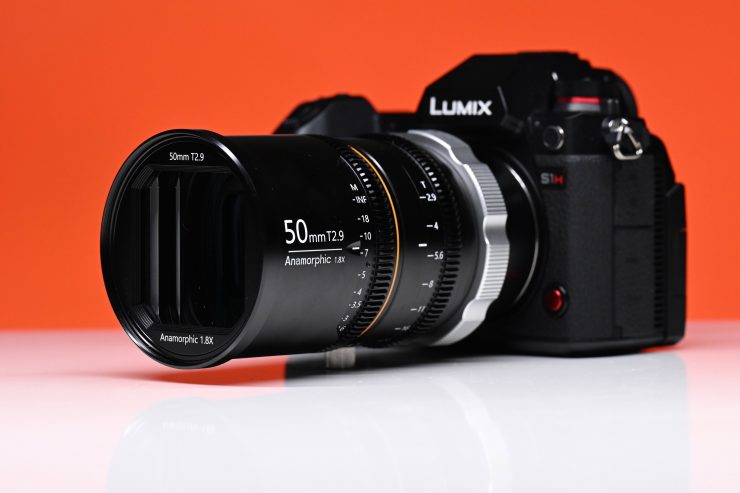
You may well find that the lens is a little heavy if you are putting it on a smaller-sized camera such as a mirrorless hybrid, but I thought it was easily manageable on those types of cameras.
Build Quality
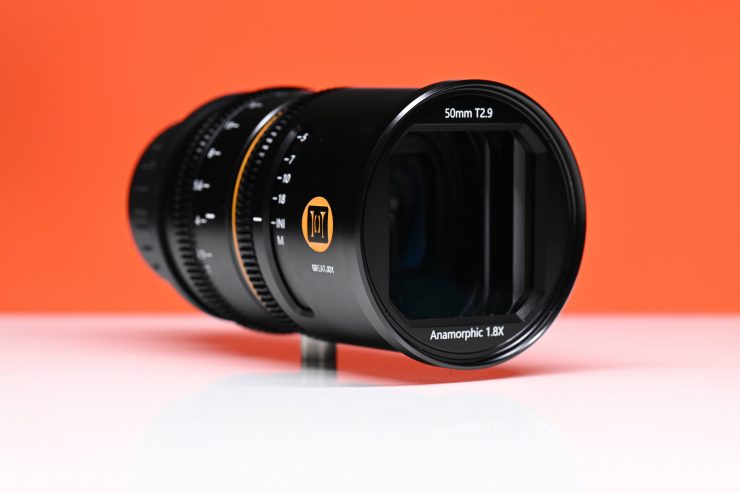
The lens is reasonably well made, but the build quality isn’t going to rival what is available from companies such as Cooke, ARRI, Zeiss, or Angenieux, nor would I expect it to.
I would say that the build quality is reasonably comparable to the Vazen 1.8x full-frame anamorphic lenses. The lens housing is made out of metal and it feels solid to the touch.
I like that Great Joy went with a fairly understated design and the lens doesn’t draw attention to itself.
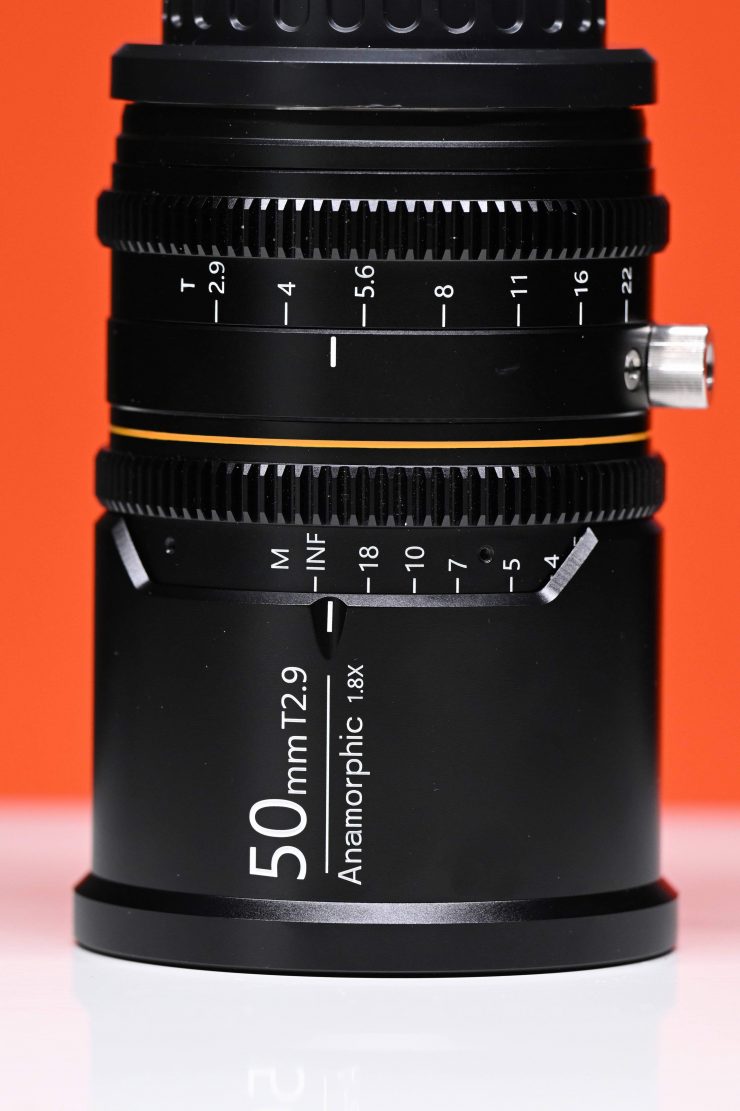
The iris ring is nicely weighted, however, the focus ring didn’t have a lot of resistance and I found it to be a little loose for my liking. The resistance also wasn’t consistent. The lens has less resistance as you move from its minimum focusing distance to infinity. Conversely, when you are moving from infinity towards the minimum focusing distance there is considerably more resistance. These may be small complaints, but it was enough for me to notice and take note of.
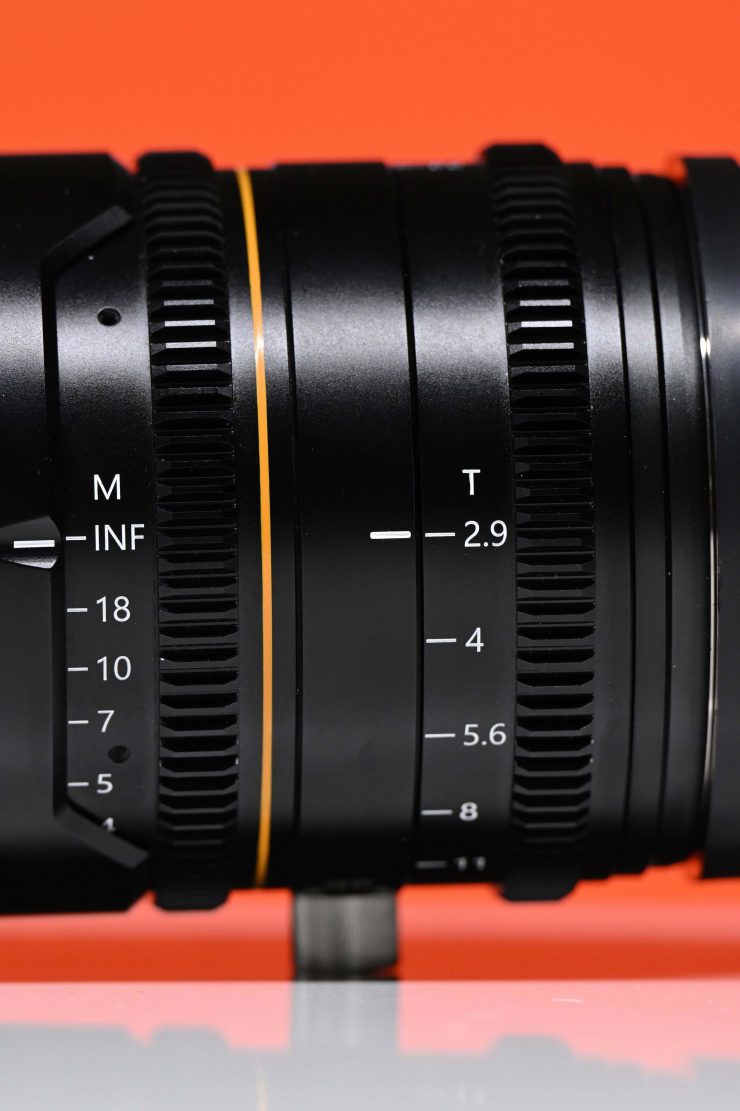
The other small issue I came across is that the pitch gears are quite recessed into the body of the lens. This does make the lens slightly more tricky to use with focus motors.
Attention to detail is still important, even if you are selling a lens for under $1,300 USD. Customers shouldn’t come across issues, especially with the operation or build quality. What always concerns me is that in a lot of cases with more affordable lenses, the consistency in terms of build quality and performance is not always the same. I have no way of knowing with this company whether or not that is the case, without seeing more than one lens.
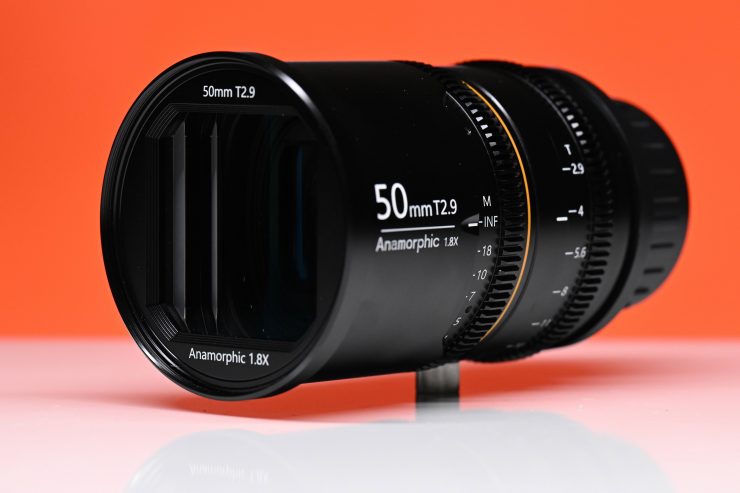
First impressions matter, especially for a relatively unknown company, and regardless of how good a lens actually performs, appearance and attention to detail will matter to a lot of potential customers.
Markings
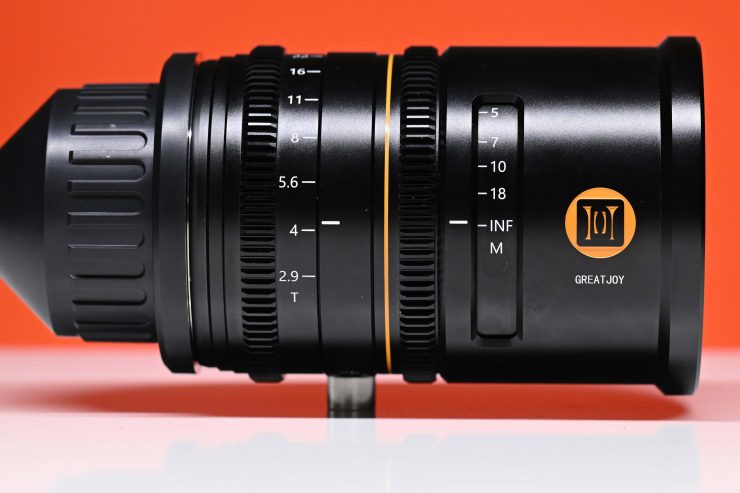

Great Joy 50mm T2.9 1.8x 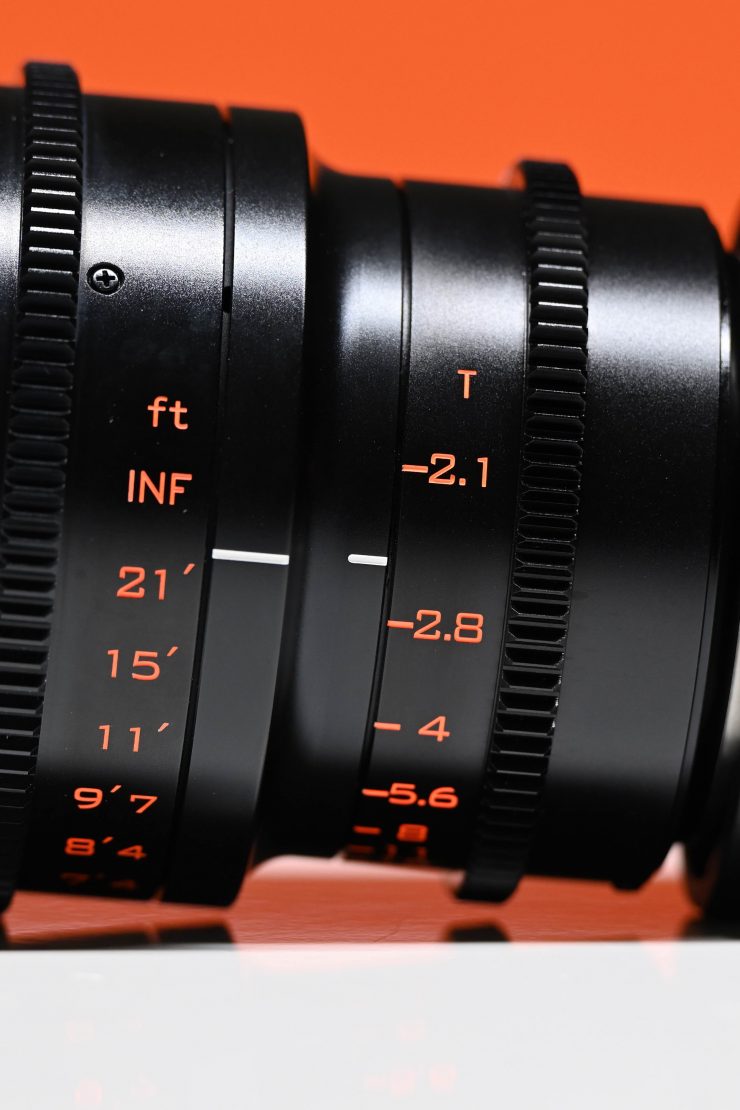
Vazen T2.1 50mm 1.8x
The lens has decent markings for both aperture and focus. What I like is that they have actually placed physical marks next to the distances on the lens. This is something Vazen doesn’t do on its competing lenses.
For a budget lens, it is nice to see markings for both the aperture and focus on the non-operators side of the lens.
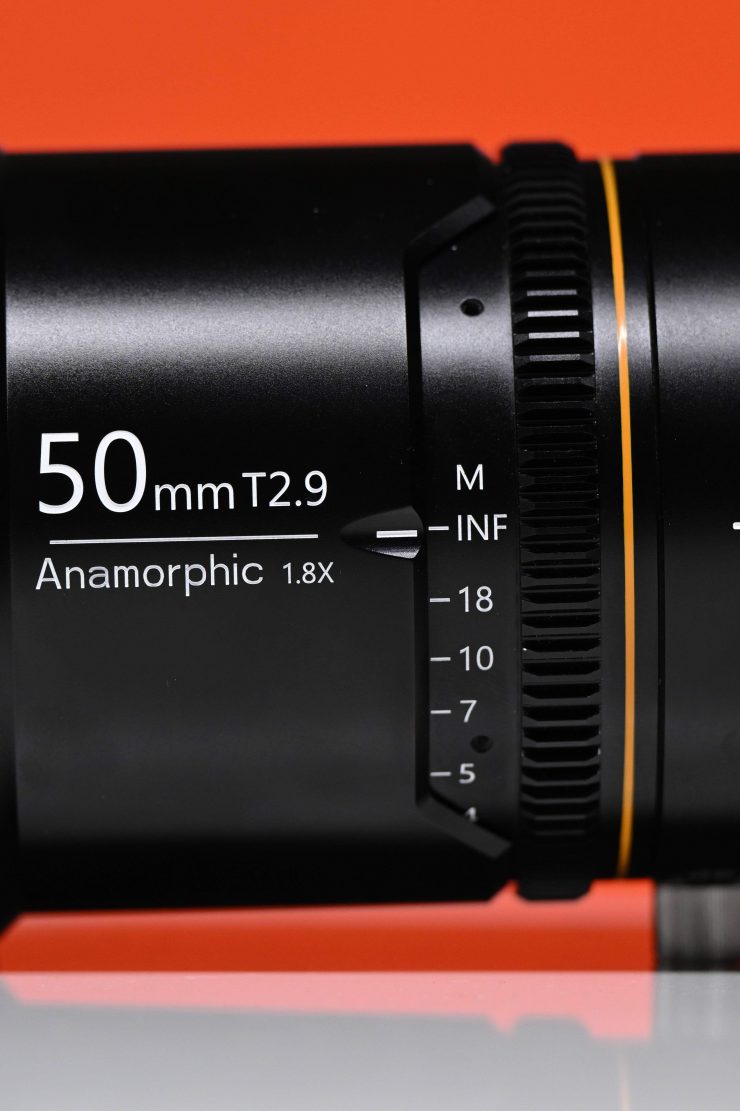
The only slight complaint I have when it comes to the markings is that the infinity marking doesn’t line up correctly. This may be a small issue, but attention to detail is important.
Other Features
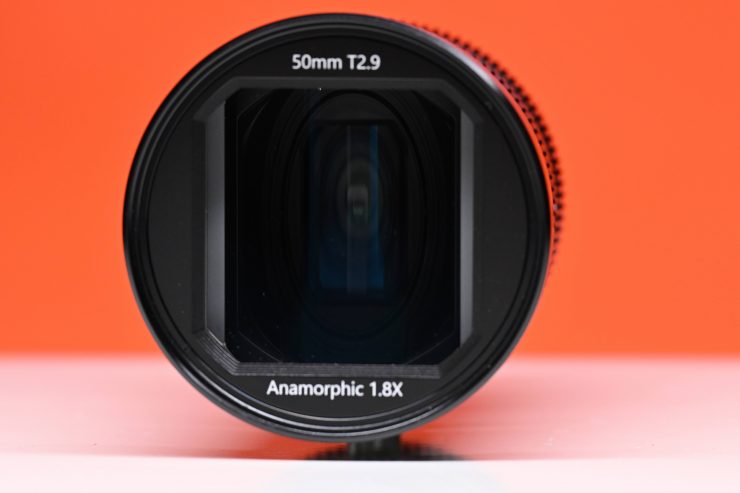
The lens is designed with an 82mm front filter thread for attaching filters or diopters. The front diameter is a standard 95mm for matte box mounting.
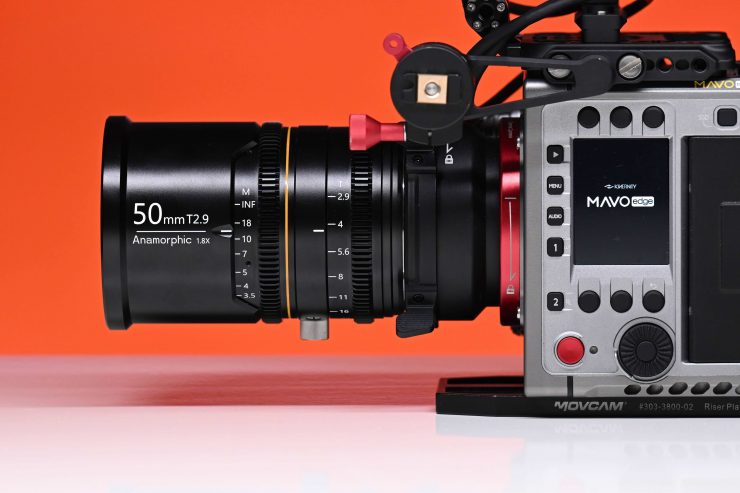
The aperture and focus rings feature industry-standard 0.8 mod cine gears. The location and position of the iris and focus gears are supposed to be consistent with all of the focal lengths once they are available to make switching a lens over easier and fast when you are running a follow focus.
The lens also features a close focusing distance of 2.35′ / 0.70 m. This is pretty good for a 1.8x 50mm anamorphic.
| MOD | |
| Great Joy 50mm T2.9 1.8x | 2.35′ / 0.70 m |
| Vazen 50mm 1.8x | 3.6′ / 1.1 m |
| Cooke Cooke 50mm Anamorphic/i 1.8x Full Frame SF Prime Lens | 2.0′ / 0.6 m |
| CALDWELL CHAMELEON 48MM XC 1.79x | 2.5′ / 0.76 m |
Above you can see a comparison between the Great Joy and a couple of other full-frame 50mm (or close to) 1.8x anamorphic lenses. The Great Joy has a pretty good close focus ability and it is better than both the Vazen and the CALDWELL CHAMELEON.
Mounts
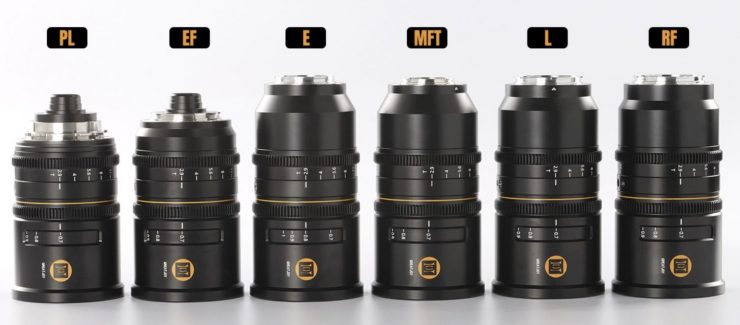
The lens is available in 6 different mounts, including PL which is nice to see for an anamorphic lens at this price point.
Why 1.8x?
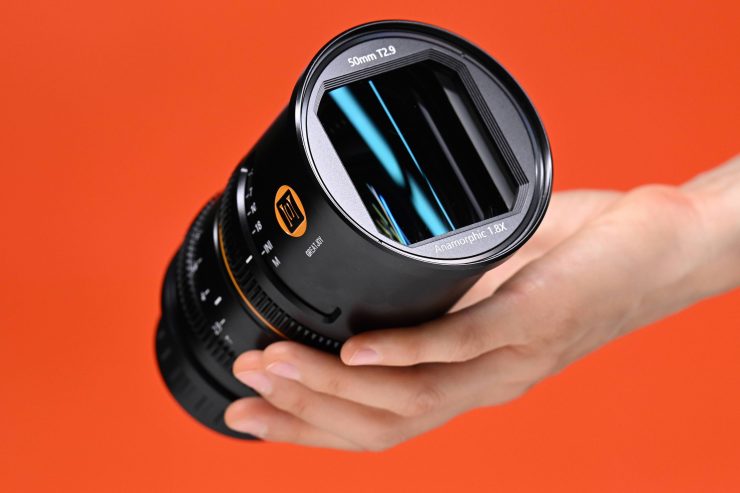
Great Joy chose to adopt a 1.8x squeeze design to balance the anamorphic characters as well as the resolution of the image. The 1.8x squeeze can produce a cinematic widescreen 2.39:1 aspect when paired up with 4:3 sensors. When paired up with 16:9 sensors, much less data (than 2X anamorphic lens) is needed to be cropped away to create the desired 2.39:1 ratio. Yes, by doing this you are cropping away information on both sides of the image, but you end up with a more acceptable aspect ratio.
Sure, you could also use the whole image and not crop to 2.39:1, but then you end up with an aspect ratio that is unsuitable for most commercial content.
Great Joy didn’t clearly state that the squeeze factor does vary from around 1.68x to 1.8x depending on the focusing distance. This is not uncommon among anamorphic lenses for them to behave in his way. I did all of my technical tests at the minimum focusing distance and when de-squeezing the image by 1.8x I didn’t notice any big distotion. If you are shooting someone’s face, then depending on the individual, it could have the potential to look slightly distorted. This could, of course, be easily corrected by changing the squeeze factor slightly in post.
In a lot of ways, particularly for a lens at this price, the decision to go with a 1.8x anamorphic makes a lot more sense than going with a 2x. 1.8x is more versatile and it allows the lens to be used on more cameras. I also suspect that it is also more affordable and easier to make a 1.8x anamorphic lens than a 2x.
Optical Structure
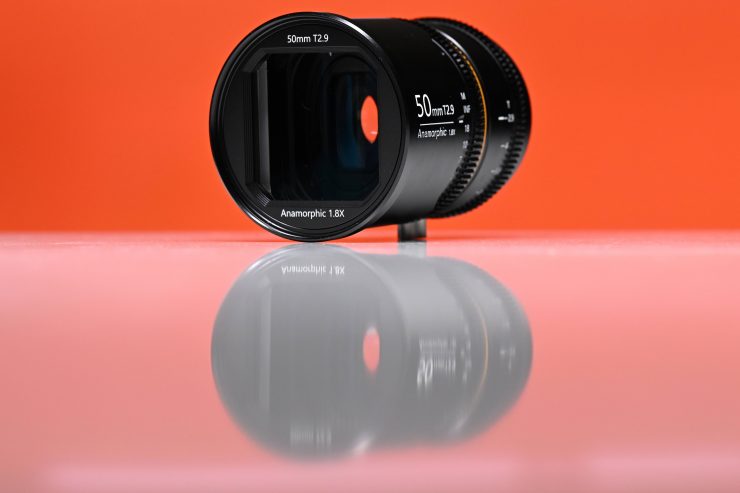
The optical design of the lens consists of 16 elements in 12 groups and it has 11 aperture blades. As a comparison, the Vazen T2.1 50mm has 12 Elements in 10 Groups. The lens also has 11 aperture blades.
Breathing
Anamorphic breathing appears in a different way than when using a normal spherical lens. With a spherical lens, breathing gives the appearance that the focal length is changing. However, with anamorphic lenses, vertical stretching occurs with the background. So when you adjust focus from something close to something further away, the background takes on a squeezed appearance. Hence why you see oval instead of round bokeh.
With anamorphic lenses, the more you stop the lens down, the less the out-of-focus object’s appearance will change. If you shoot wide open and pull focus the out-of-focus objects will change shape more dramatically.
Older anamorphic lenses such as Lomo’s and Kowa’s can breathe a lot. Newer anamorphic designs from companies such as Zeiss and Cooke have a lot less breathing. The popular Panavision E Series anamorphic lenses retain true anamorphic artifacts such as disproportional vertical focus breathing.
So how does the Great Joy fare?
Focus breathing is well controlled on the 50mm. You can see my tests above. For these tests, I was pulling focus by hand.
Fall off and Vignetting
As I already mentioned earlier in the review I did see some vignetting when using this lens on a Kinefinity MAVO EDGE 6K in 6K 3:2. However, the vignetting is very slight and I didn’t find it distracting or unpleasant.
Sharpness
A lot of the more ‘affordable’ anamorphic options on the market tend to struggle when it comes to sharpness. In saying that, some anamorphic lenses have an inherent softness that is esthetically pleasing to a lot of DPs.
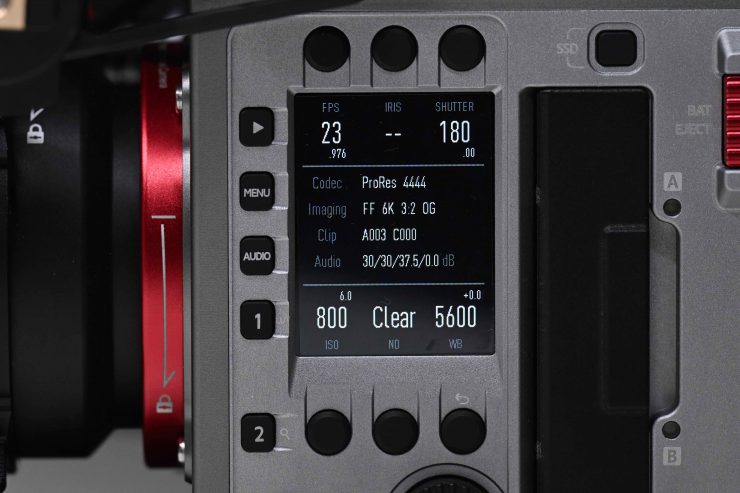
I shot a sharpness test with the Great Joy on a Kinefinity MAVO Edge 6K in 6K (6016 x3 984) Open gate to see how sharp the lens was at various T stops. Above you can see that the lens is still reasonably sharp when used wide open at T2.9. Sharpness does improve once you start stopping it down, and by the time you hit T5.6 it is pretty sharp.
For an anamorphic lens, the sharpness is very good, especially considering the price.
Lens Flare
Along with nice oval-shaped bokeh, lens flair is one of the most sort after characteristics of shooting with an anamorphic lens. The Great Joy will give you that typical blue streak that most people like, however, it is far softer and more esthetically pleasing than most other anamorphic lenses I have seen that are under $10K USD. Wide-open at T2.9 the blue streaks aren’t over the top and whether or not you like that look is a purely personal decision. I personally liked the lens flare and streaks I was getting with this lens. They had a nice softness to them, whereas with most other budget anamorphic lenses the streaks and flares can look quite artificial.
Once you close down to T5.6 the blue streaks are a little more pronounced, but I did still like the results I was obtaining.
In general, the lens maintains a good amount of contrast even when bright light sources are coming directly down the lens barrel.
Chromatic Aberration
The lens doesn’t have any signs of visible real-world chromatic aberration, even when used wide open. There isn’t any nasty color fringing and you can see that the bokeh doesn’t have any color bleed. This was very impressive for an anamorphic lens at this price. The competing Vazen 50mm T2.1 1.8x does show signs of chromatic aberration and you do see color bleed on bokeh.
Bokeh
Nice oval-shaped bokeh is something you want if you are purchasing an anamorphic lens. The bokeh produced is reasonably pleasing, especially when used wide open.
The lens has a nice soft fall off into out-of-focus areas.
Color Tone & Personality
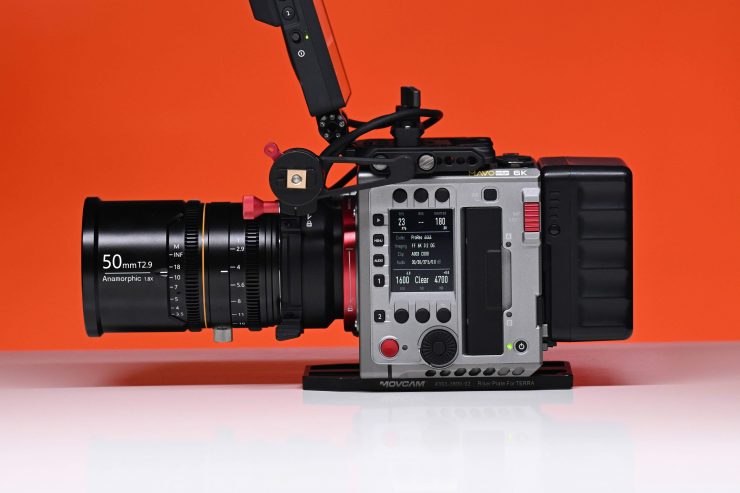
The lens is fairly neutral when it comes to color, however, I thought it leaned slightly warm. In terms of its personality, it has a nice amount of character.
I quite like the look of the lens, but again, this is just my personal opinion.
Real World Thoughts
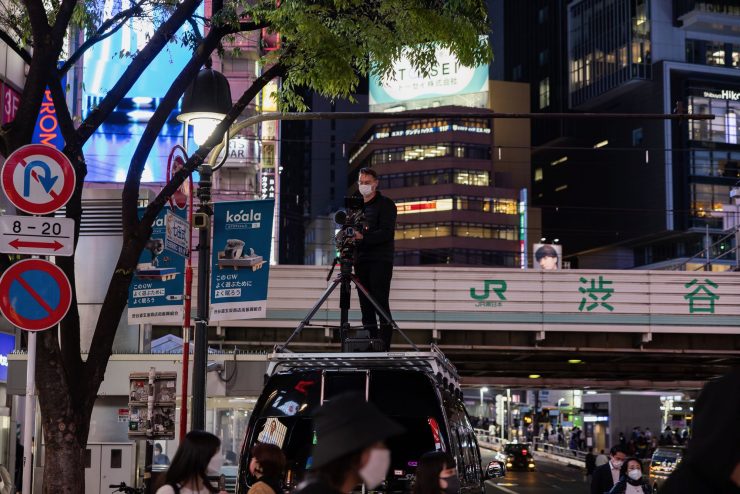
The lens is relatively easy to use and operate and I liked the images I was getting from it. It is reasonably sharp as far as anamorphic lenses go, and optically it has some nice character. The lens is relatively compact given the image sensors it covers and it works well on a wide array of cameras.
I got a few quick shots with the lens when I had a spare 30 minutes during a recent shoot just so you can see what it looks like in the real world.
Above you can see some images taken with the lens. A lot of these shots were done without a tripod as I was just walking around with a small camera. I have done some quick day and night shots just so you can see how the lens looks when it comes to distortion, bokeh, flares, etc.
For me, an anamorphic lens is more about flares and bokeh, and they can be used as an option when shooting lots of different types of projects and you can also mix them in with spherical lenses.
More Focal Lengths Coming
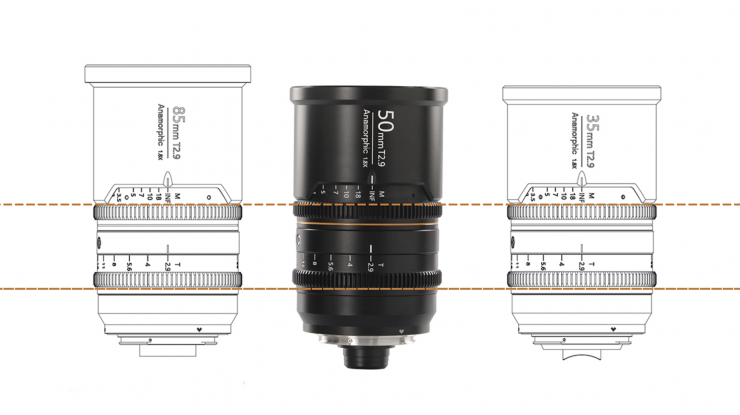
Great Joy also has plans to release two more lenses in the series, a 35mm and 85mm, sometime this year.
I’m going to play the devil’s advocate for a second here and state that I personally think it makes a lot more sense to launch lenses once you have a set available.
I am not just having a go at Great Joy here, because other lens companies have done the same thing.
Price & Availability

Great Joy has a few launch day specials:
- PL Mount (With native EF mount included) $1359 USD
- EF Mount $1279
- Mirrorless Mounts (E/RF/MFT/L) $1119 USD
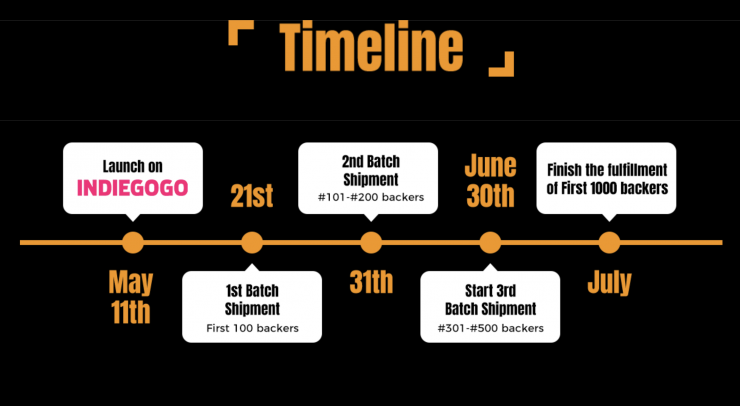
Great Joy will officially launch the lens on Indiegogo on the 11th of May. They are also promising that the first backers will receive their lens on the 21st of May. Like any crowdfunding project, we always urge you to use common sense and be well aware of the risks. There are never any guarantees with crowdfunding projects that you will receive a product or that it will ship on time.
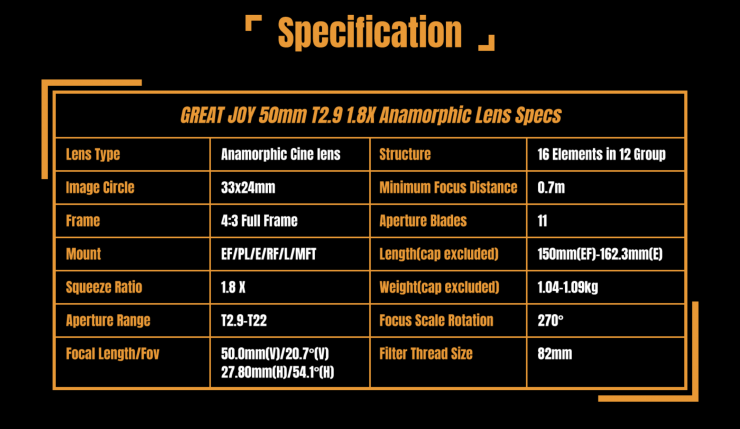
Competition?
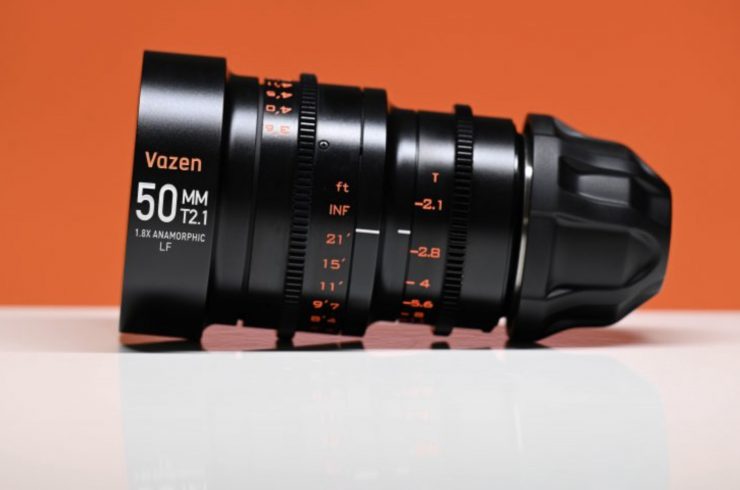
There is actually only a handful of 1.8x full-frame anamorphic prime lenses available, and the Great Joy isn’t priced to compete with any of them.
The closest competition comes from the much more expensive Vazen 50mm T2.1 1.8x anamorphic. which retails for $8,000 USD.
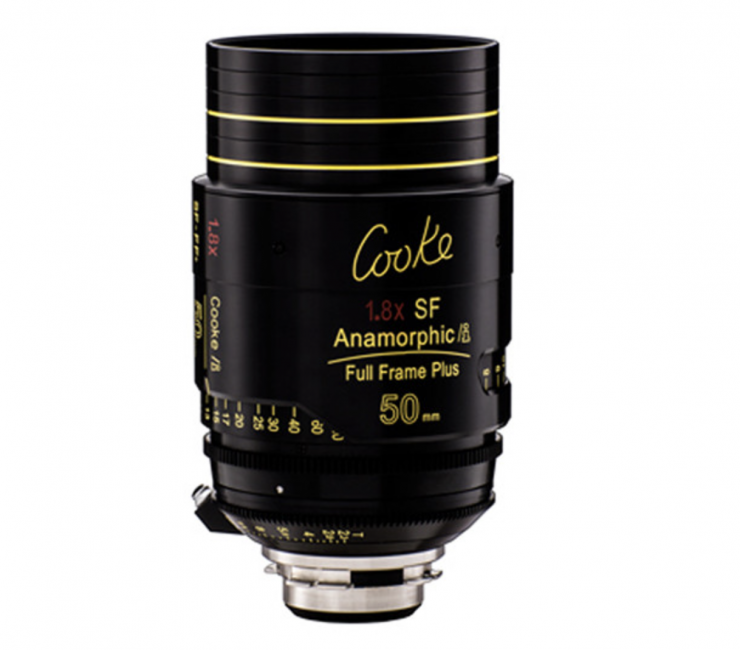
You also have the Cooke 1.8x Anamorphic/i Full Frame Plus series, and the Caldwell Chameleon 1.79x XC Anamorphic Lenses (XC -EXTENDED COVERAGE). The Caldwell Chameleleon primes retail for €28,750 and the Cooke 50mm 1.8x Anamorphic/i Full Frame Plus series costs $34,600.00 USD each. The benefit of both of these series is that they are already available in multiple focal lengths.
Do you really need an anamorphic lens?
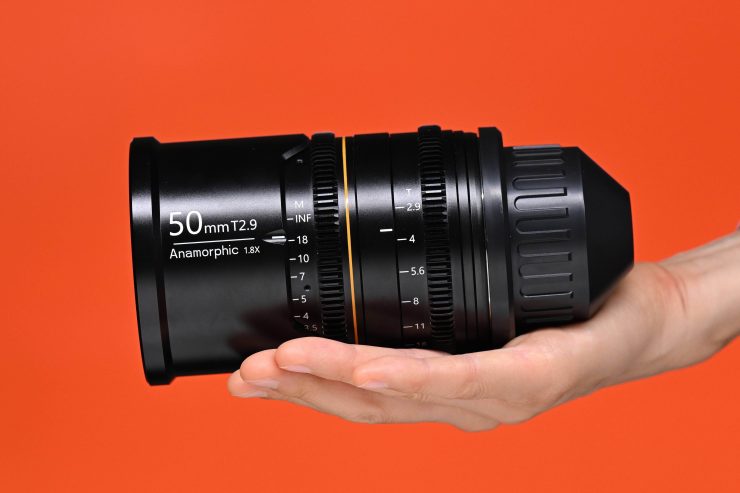
I think in principle a lot of people like the idea of shooting with anamorphic lenses, but whether or not you actually need to maybe a completely different story. Depending on what you do there may well be little to no demand to shoot anamorphic. For a lot of shooters, it makes more sense to rent anamorphic lenses rather than to own them, however, with quite a few budget-friendly options now on the market, they are affordable enough to purchase.
While you may find the look of anamorphic esthetically pleasing, a lot of shows will not shoot anamorphic if they are going on broadcast television, simply because the broadcasters don’t want viewers complaining about black bars on top and below the image. With more and more online content being created by Netflix, Amazon, Disney, etc. this isn’t really an issue. Online steaming entities are often more than happy to have productions shoot with anamorphic lenses. If you producing content that will end up in a widescreen aspect ratio you could easily mix anamorphic and other spherical lenses together. Also if you are making your own content then go for your life and use whatever you like.
In my honest opinion, it is usually better to just rent good anamorphic lenses for projects that require them. Although, in saying that, buying affordable anamorphic lenses makes sense if you are someone who is going to use them a lot for the type of work you do.
Conclusion
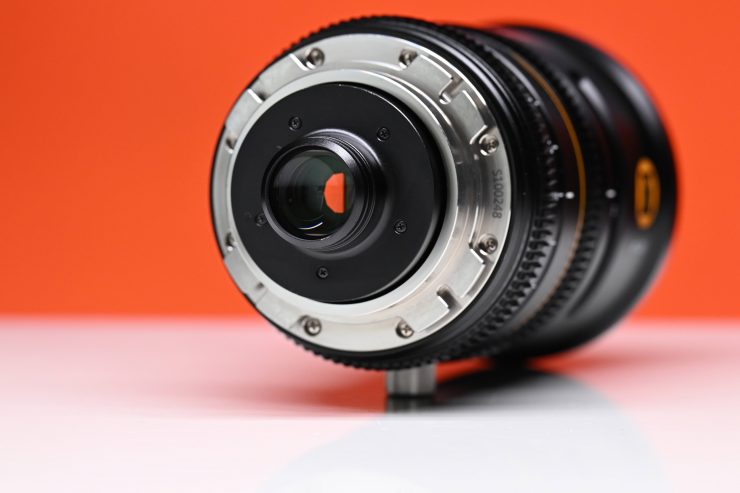
Great Joy has certainly swung for the fences with this lens and it is ridiculously cheap for what it is. The Great Joy 1.8x full-frame anamorphic lens doesn’t really have any direct competition, especially at its price point.
In the past, I have generally been pretty disappointed with most so-called ‘affordable’ anamorphic lenses. The only decent full-frame offerings that have a 1.8x squeeze that I would consider ‘affordable’ were the Vazen which are still $8000 USD each.
I was surprised by the Great Joy. I had my doubts that a full-frame 1.8x anamorphic that you could get in PL mount for under $1,400 USD could possibly be any good. But, I am glad I was proved wrong.
In my personal opinion, the lens could have slightly better mechanics, and better markings, but you know what, for the price, I am willing to overlook that. It is reasonably sharp for an anamorphic lens, it has nice bokeh and flare, and it can be used on a wide array of cameras.
Anamorphic lenses are hard to review. Sure, I can talk about the technical aspects of a lens, but technical perfection is not what most DPs look for when choosing an anamorphic. The character and unique look of a lens are why certain anamorphic lenses are more popular than others. Unless you are after something that is super clean like an ARRI Master Anamorphic, the preference is usually to find and use a lens that has lots of character.
In the past, anamorphic lenses were predominantly rental items for a lot of shooters, simply because the cost of ownership was so high. Now, with more affordable options coming to market I can see more and more people starting to purchase them.
Lenses can have different characteristics when used on different cameras and it is important to try out both the lens you want on the camera or cameras you own or use.
The Great Joy 50mm T2.9 1.8x Anamorphic isn’t optically perfect, but that’s what gives it its character. I personally like the look of the lens and it certainly ticks a lot of boxes if you are looking for a very cost-effective anamorphic solution.
The lens strikes a very good balance between affordability, image quality, and usability. Companies like Great Joy are certainly filling a gap in the market that previously didn’t exist.

